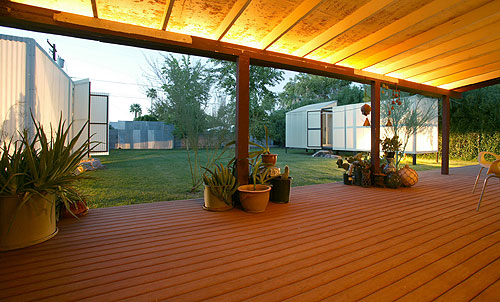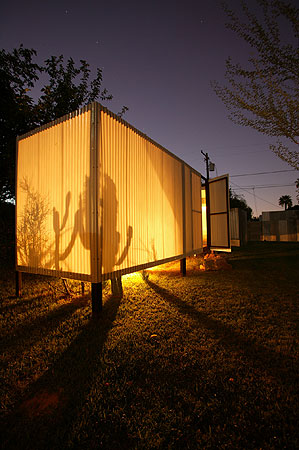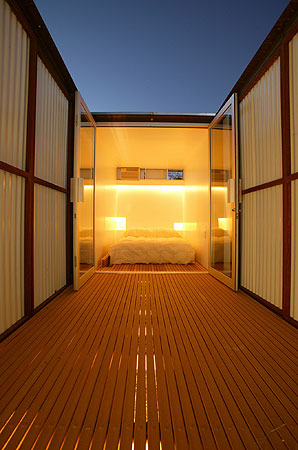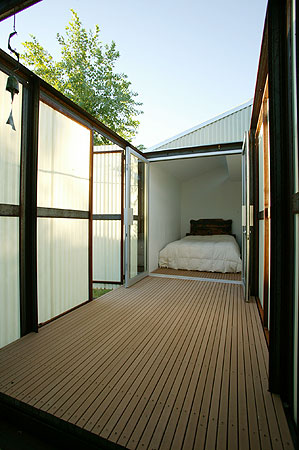The Cedar Street Residence in Tempe

Maria: At first we thought we would have been perfectly happy with a couple of Airstreams - no framing, cladding, building, etc. for us to do.
Matt:Because we really wanted a lot of translucency and openings, it would have actually been more expensive to start with either an Airstream or shipping container, but neither the trailers nor containers are designed to work with the materials we wanted to use.
Maria: The more we looked at it - our pods needed to be more specific than that. The steel frame we had fabricated became an economical start and flexible enough to include a deck and garden inside - two features we wouldn't have had if we went with the trailers..
Matt: We avoided cost and waste by creating our own steel frame instead.

Matt: Maria and I seem to lean towards creating frameworks that change over time on their own. The transparency of the Pods creates ever-changing patterns of shadows throughout the day, and at night the Pods can be lit up to become giant yard lanterns.
Maria: At night the backyard becomes more pure. The main house and pods are well lit from within while the courtyard between the pods opens up to the starry sky. We don't have any other landscape lighting.

Matt: There are pros and cons to sleeping 'right up against the night'. Seeing the stars, moon, and plants from bed is poetically wonderful, and adds to our lives everyday. Seeing a lightning storm directly at the foot of your bed is not so wonderful. Even though the Pods are grounded, it is still a bit daunting at times. Overall it's worth it.
Maria: Getting to sleep in the pod is very exciting! We have loved it since the very first night about 2 ½ years ago. It's a dreamy way to fall asleep gazing out at the garden and night sky.

Maria: The temperature control is very local. We don't heat or cool the main house while we're sleeping in the pods. This saves a lot of money. In the summer we use the thru-window A/C that's designed into the wall system. In the winter we use an electric blanket.
Matt: The Pods are temperature controlled mostly via passive cooling. A floor vent brings in cool air and releases warm air through a high window. When that isn't enough, which is about 10 weeks per summer, we have the smallest window A/C unit available.

Matt: Since sleeping in the Pods, I feel like I've reconnected with the delicate yet vibrant life of plants. I now notice small and amazing changes in all plants, such as the subtle color differences of new growth, or the incredibly powerful way a flower bursts open over a couple of days.
Maria: Living among our backyard garden has lead me to feel more responsible for our out door environments everywhere. This space cannot take care of itself.


Matt: The tilted roof of #1 (above) was meant to maximize the passive cooling. But it was so difficult to build and was the only part that created a lot of waste, so it was eliminated. As I have learned, passive cooling doesn't really require such a tilt anyway. Heat goes where it can, as long as it's high up.
Maria: The pod #2 (below) is simpler in design and consequently made the construction easier. With the flat roof, for instance, in a total of five minutes four of us lifted the pre-fabricated metal roof from truck to pod and screwed it right into place.
